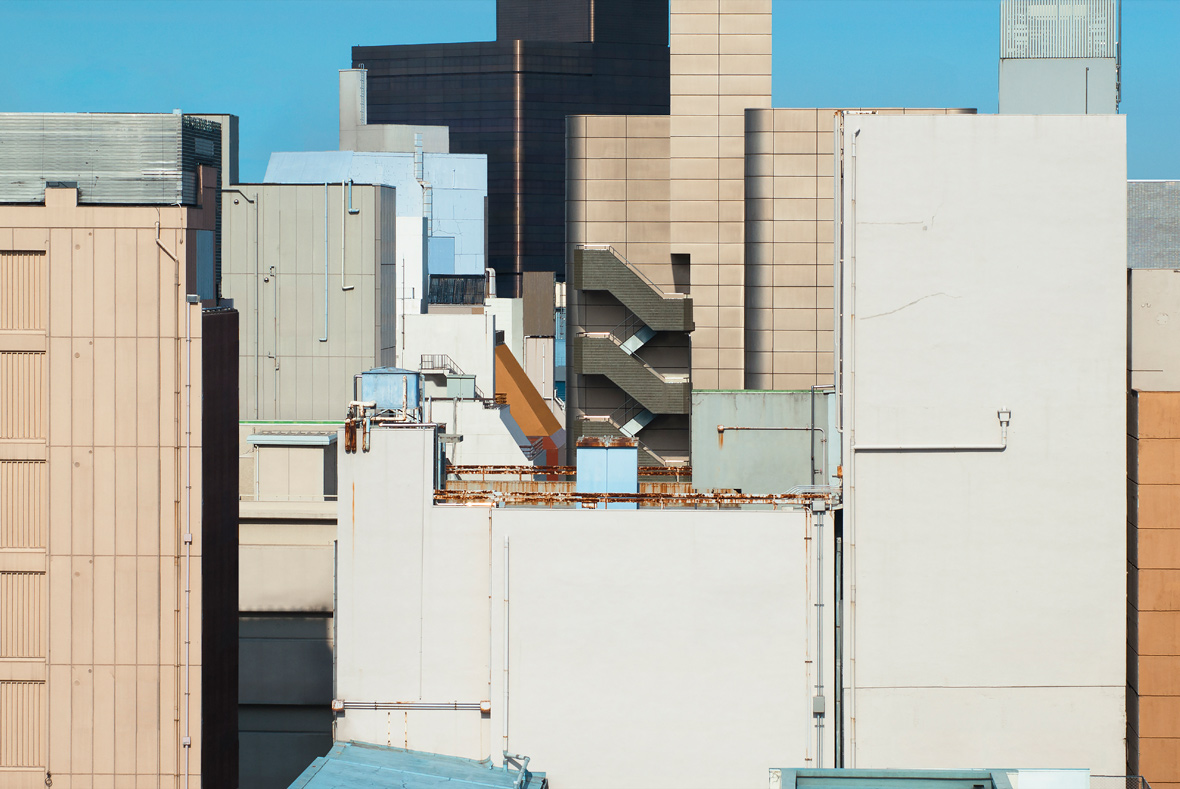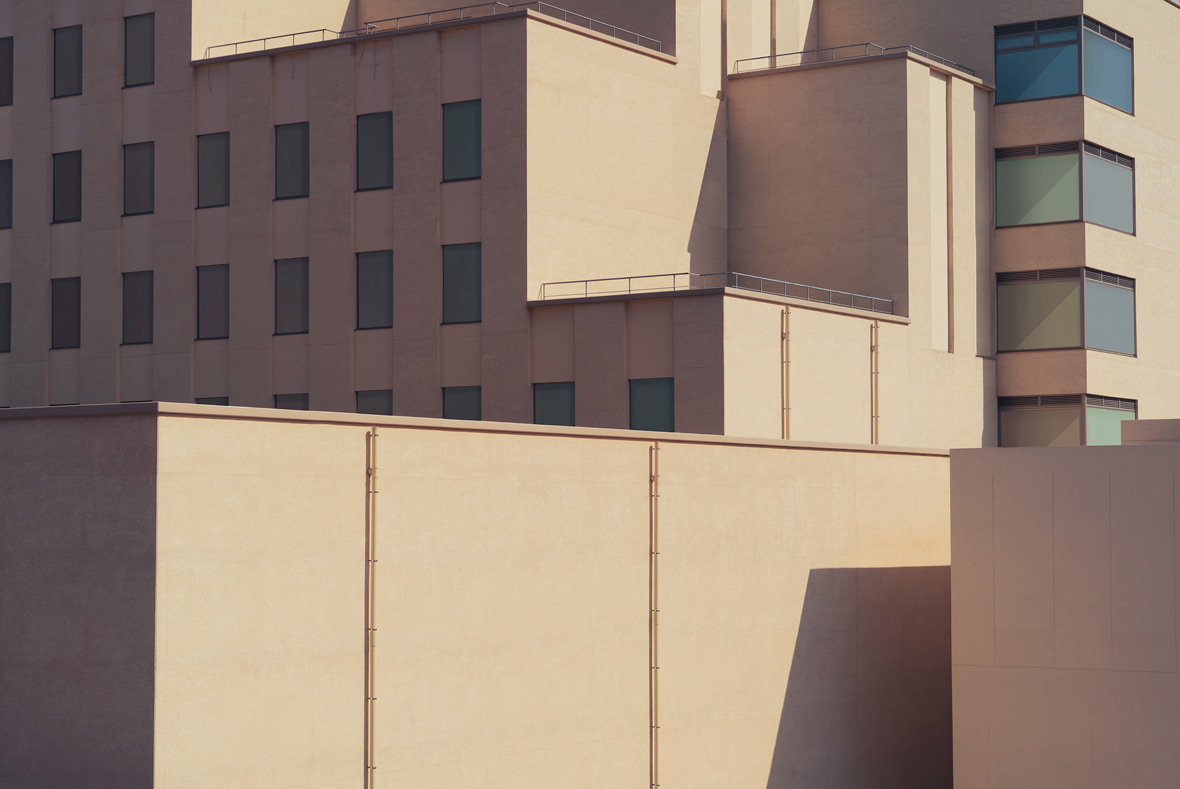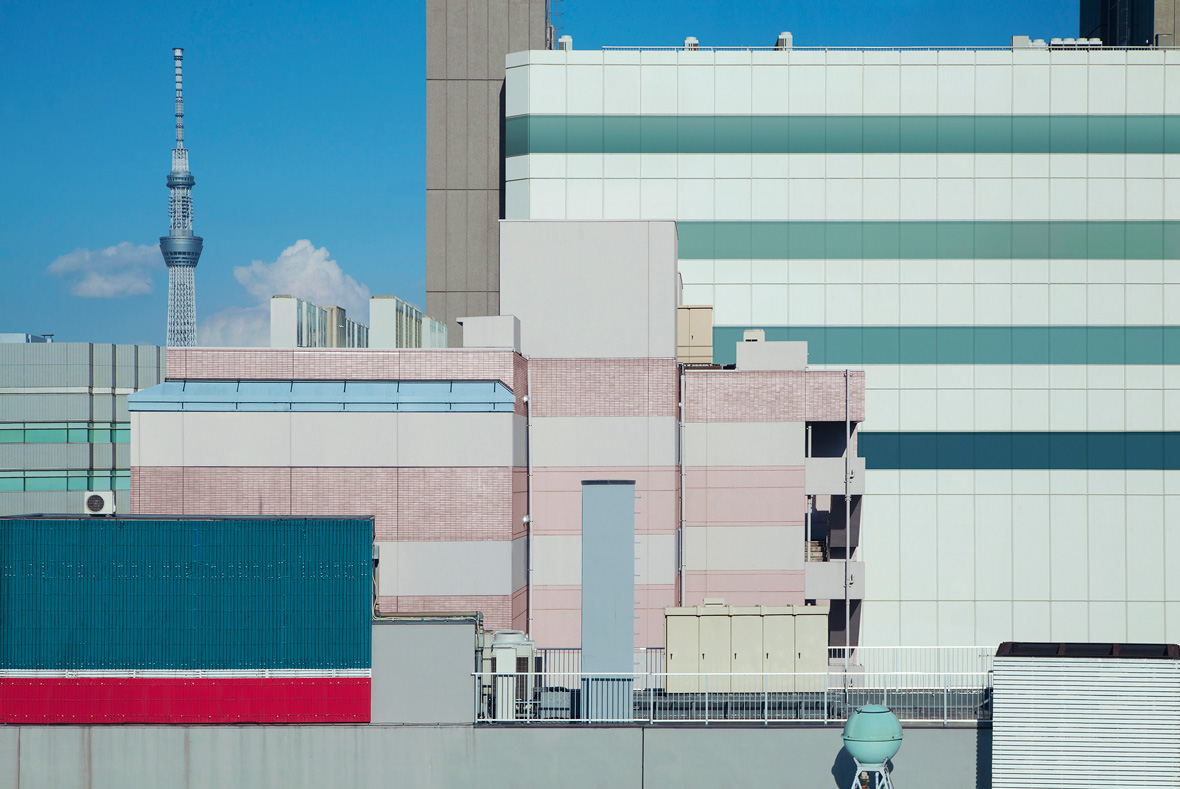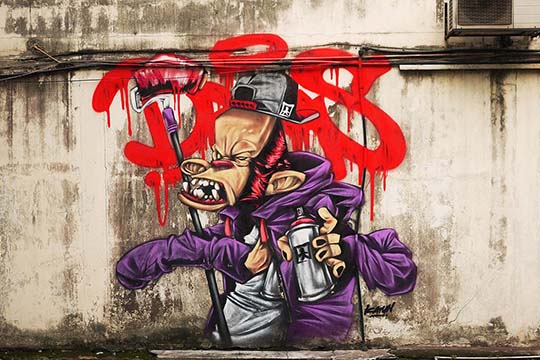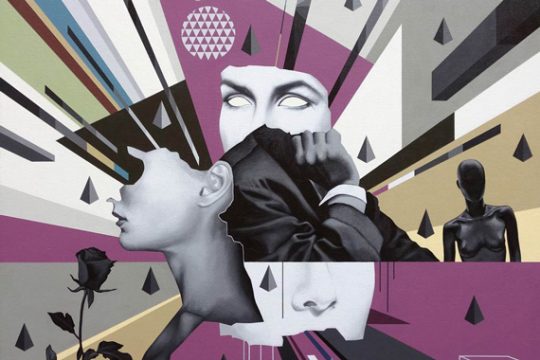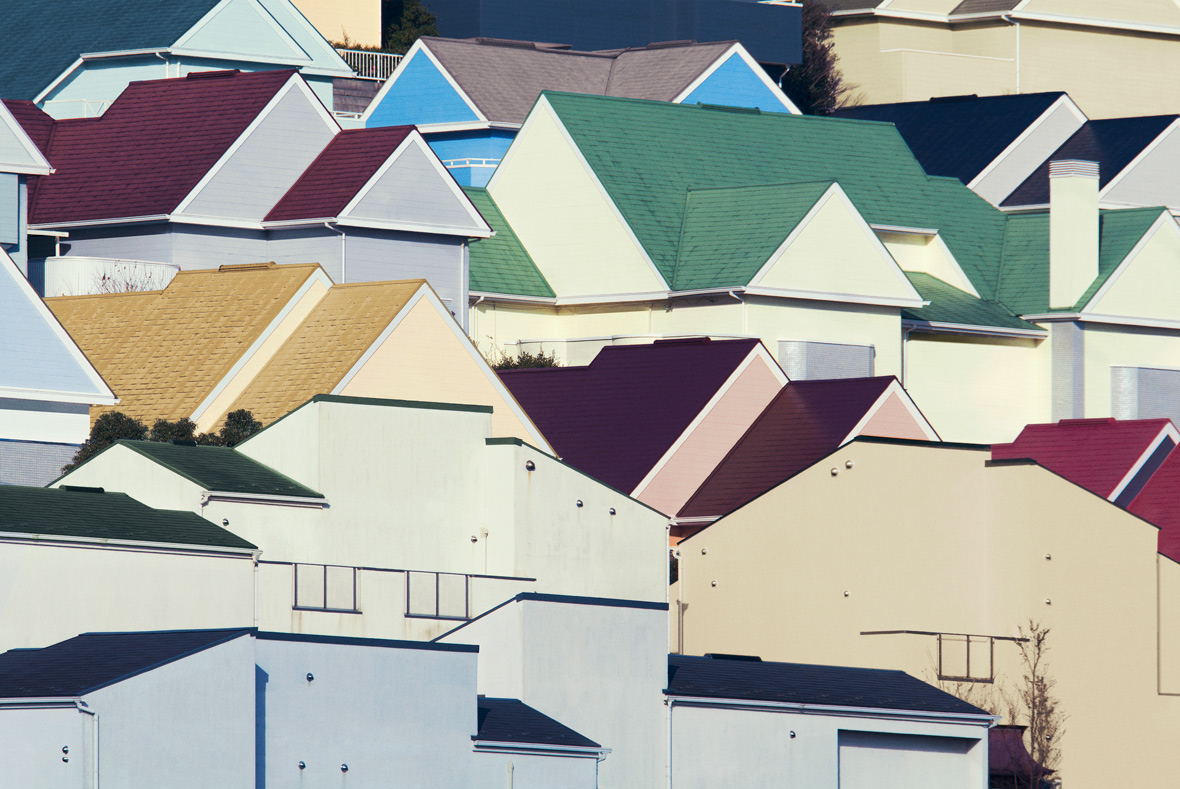
A city has many shapes and forms. For some, they’re arenas for the unending rat race. For others, they’re places where tales of love and hate unfold. For even others, they’re well-oiled machines that chug along, indifferent to the suffering and happiness of those caught within its sprockets and cogs.
For Tokyo-based photographer Rumi Ando, her city is all of these things and more. The multifaceted nature of Tokyo, as she sees it, is what allows her creativity to flourish. Her photo series, NUDE TOKYO, offers forth never-before-seen perspectives of Japan’s biggest metropolis. Rather than the bustling urbanity that it’s often associated with, she presents a collection of pared-down skylines—the city’s inhabitants, building windows, power poles, road signs, and other elements that she deems as “visual noise” have all been stripped away. Through this process of deduction, she shows the city in bare, surreal arrangements.
城市意味着什么?是激烈的职场厮杀、是人世间爱恨的交逢、还是桎梏乏味的大型机器……对于艺术家来说,城市很可能是灵感的乐园,甚至是缔造创意的重要媒介,日本摄影师安藤瑠美(Rumi Ando)的作品就是很好的映证。在她最近的系列《东京裸体 (NUDE TOKYO)》中,日本东京成为创作的核心。和印象中那座拥挤、繁忙的大都会不同,安藤瑠美有意消除了城中的人、窗户、电线杆、路牌等各种“视觉噪音”,唯有建筑物以 “赤裸” 的状态排列起来。她正在为东京做减法,人,并不是这里的主角。
Rumi isn’t a Tokyo native. Born and raised in the Okayama Prefecture, over six hundred kilometers away from Tokyo, she dreamed of living in the big city while she was growing up. To fulfill these aspirations, she enrolled in the art-and-photography program at the Tokyo University of the Arts, with plans of staying in the city after graduating.
After completing school, she was delighted to be hired as a retoucher at a local ad agency. But, living in Tokyo wasn’t exactly as she pictured it. Life in the concrete jungle was much more depressing than she realized. Under the stress of the city’s work culture, it often felt like the walls were closing in on her. Interpersonal conflicts and workplace drama only heightened the sense of claustrophobia. To get away from it all, she often escaped to the city’s rooftops—undisturbed spaces where she could find peace and quiet, a brief escape from the pressure cooker of the city below. These rooftop vistas of blue skies and white clouds ultimately inspired the idea for NUDE TOKYO.
安藤瑠美并非土生土长的东京人,她生于距东京六百余公里之外的冈山县。与很多热爱艺术的年轻人一样,她向往在大城市生活,小县城里几乎没有艺术和文化发展的空间。她考上了东京艺术大学(Tokyo University of the Arts)的现代艺术与摄影专业,打算之后扎根于此。大学毕业后,安藤在广告公司里找到一份修图师的工作。虽然得以如愿,但她很快发现,这座混凝土丛林里的生活太过压抑,企业之间的经济战频繁上演、人与人之间的关系靠演、个体只能拥有狭小的空间……她说道:“东京常常令我感到窒息,这里是世界上人口密度最高的城市,人与人摩拳擦掌,只能拥有口袋大小的空间。” 工作和生活上的压力让她变得焦虑不堪,有时只能站在房顶才能暂时松口气,这里远离喧嚣、少有人烟,唯有碧蓝天空、和阳光下的房顶。于是想要拍一张,记录这心情愉悦的时刻。而这,渐渐地激发了安藤想要完成一整个系列的冲动。
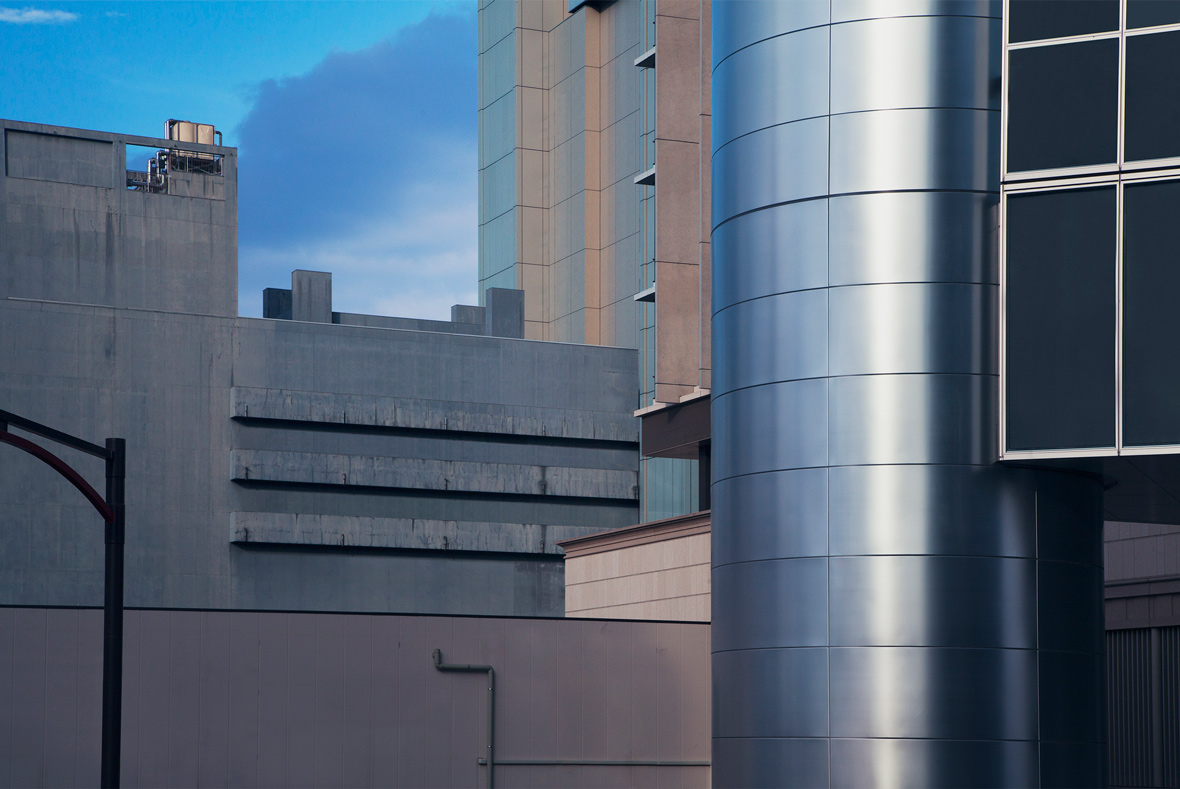
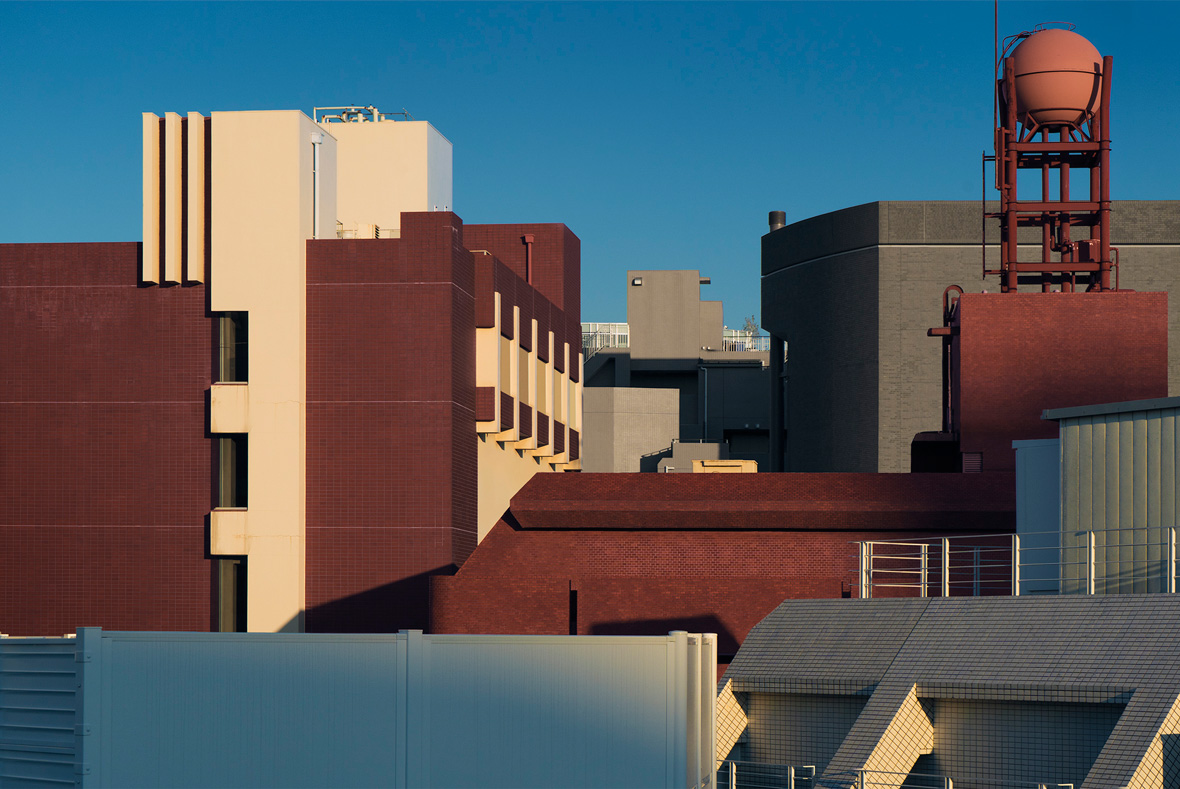
Within Rumi’s dense compositions, familiar cityscapes turn utterly foreign, appearing as a hodgepodge of contrasting colors, patterned shapes, and layered textures. However, the natural light that illuminates each scene lends them a sense of delicate airiness. With additional digital touch-ups, she pushes these ordinary settings into the realm of fiction.
The way that Rumi thinks about photography draws heavily from yamato-e, a traditional Japanese art style that was defined by calculated linework and vibrant colors. “I’m greatly influenced by the painting from the Heian period and the Kamakura period,” she says.
The methodical ways that yamato-e are composed in particular have left the deepest impression on her, and it’s clear that it still influences how she approaches her photographic compositions.
作品中,楼宇之间鳞栉次比,像是某种大型机械复杂的内部构造。听起来极为繁复,却因为画面中建筑的不同颜色、外形、材质,以及蓝天白云与阳光的直晒,让视觉体验变得整洁、立体,且富有层次感。这种构图和颜色方式的运用,与日本传统画风大和绘(Yamato-e)达成一致,其盛行于公元十世纪以前,通常规避了凌乱的笔法,以整洁的线条和浓重的颜色示人。早在安藤念高中时期,她便迷上了大和绘,随即对图像、绘画的构图方式燃起了兴趣,这些都让她之后拍摄建筑的爱好变得有迹可循。安藤说:“创作上,日本平安时代(公元794年至1185年) 和镰仓时代(公元1185年至1333年)山水画对我的影响很大。” 除此之外,《东京裸体》系列从某种程度上讲,则很好地诠释了她对于构图的理解。

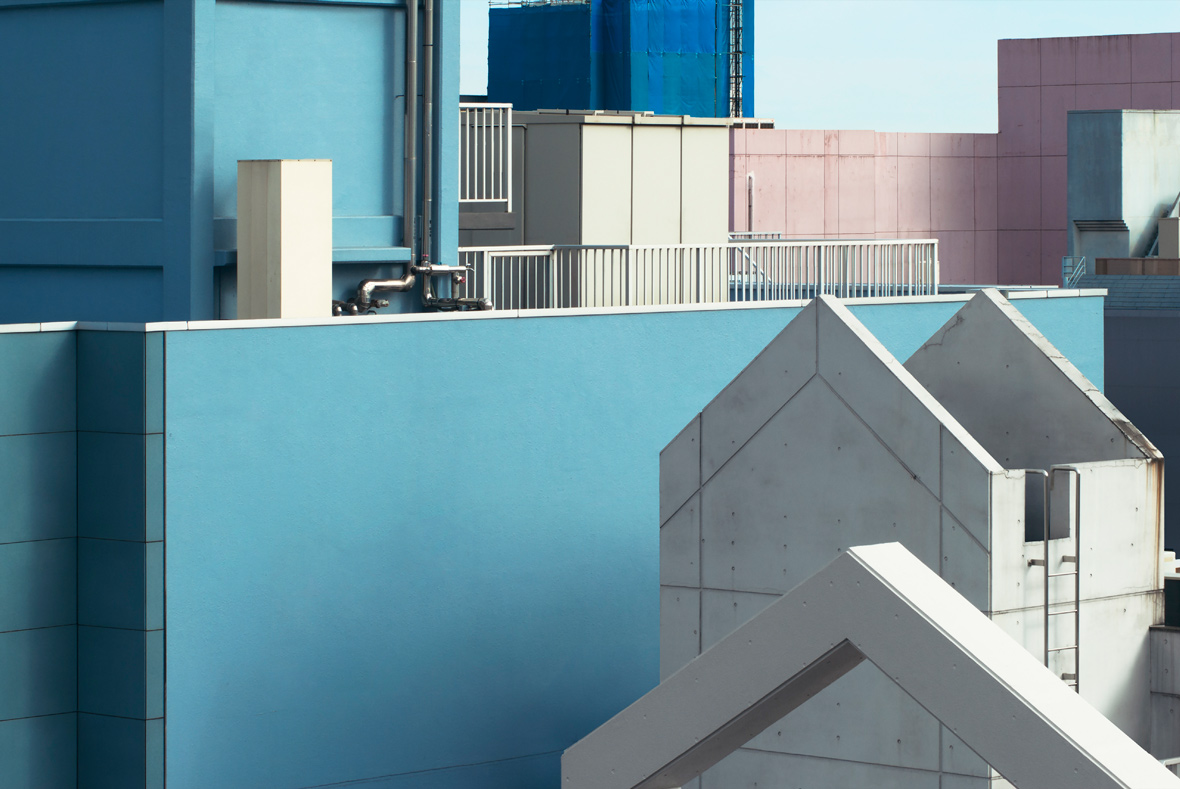
Having worked as a professional retoucher, eliminating distractions from an image comes second nature to Rumi. Through her edits, she imbues different corners of Tokyo with a reductive elegance that makes each scene drastically different from their real-life appearances. She isn’t intentionally making minimalist art, but at the same time, she believes less can often be more. “It’s a way of strengthening the composition,” she explains of her edits. “It’s also my way of capturing the isolation that defines contemporary life in Tokyo.”
Though grounded in reality, the images of NUDE TOKYO turn undeniably surreal after all the digital touch-ups are done. “Photographs consist of visual information, but I think that the information that you can feel with your sixth sense, and which cannot be expressed by itself, is very important for my work,” she notes.
作为修图师,为图像做减法对于安藤来说,可谓得心应手。每创作一幅作品之前,安藤需要在东京市内各地取景,然后经过电脑的处理,对不同图像进行拼贴、删减,达成最终的效果。通常,这个过程需要很长时间来完成。对于为什么消除了现实中的大量视觉信息,安藤解释道:“一方面为了更好地表现构图美感,另一方面,则表达了东京带给人现代与隔绝的感受。” 她自认不是极简主义者,只是希望在混乱之中寻找单纯的建筑之美,为城中纠葛心带去清爽的释怀。
得益于此,观众可以通过《东京裸体》系列作品中感受东京的全新面貌。显然,镜头里的东京是超现实的。她接着说到:“超现实是我作品主要的部分之一,但我的拍摄对象都取自现实,却通过构图和颜色带给人超现实的感受,我认为是这些视觉信息的组装是很奇妙,有时候却只可意会不可言传。”
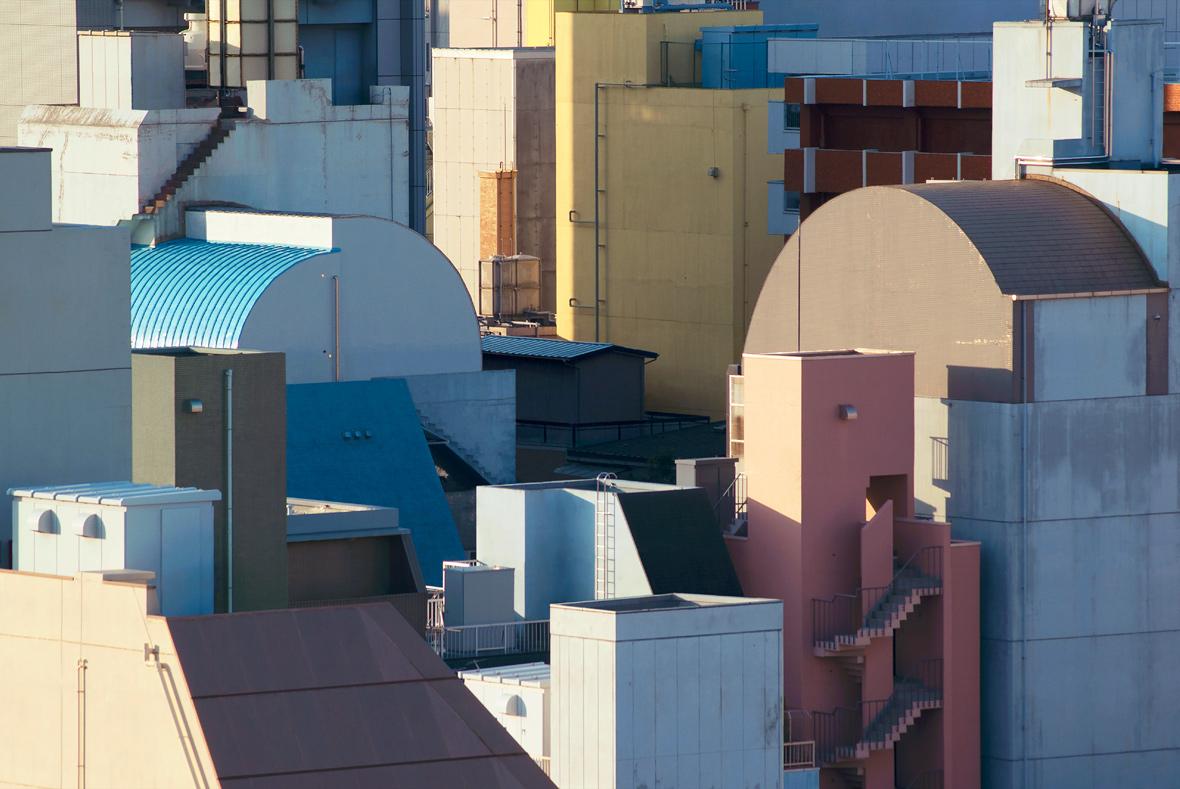
Tokyo is a city caught between the crosswinds of past, present, and future, but Rumi’s photography is firmly centered on the present and future, in that each image is a visual ode to the city’s constant state of evolution. The dizzying layers of her images speak to the frenzied clutter of urban existence, but through her edits, she finds order in the chaos and reminds viewers that life can be much simpler than what we make of it.
对于东京这座现代与过去交叠的城市,安藤瑠美并未选择某种怀旧的方式来记录它,而是透过建筑之美来描述城市日新月异的变化。相片中,层峦的楼宇也映射着这个眼花缭乱的时代。即便繁琐、无窗的世界会让人感到迷茫与不真实,但我们依然要抱以阳光的心态对待不同的事物,让灰色变得多彩;空闲时,也要偶尔多去屋顶吹风休闲,重拾自我的信心和期待。
Like our stories? Follow us on Facebook and Instagram.
Website: www.rumiando.com
Instagram: @andytrowa
Contributor: Pete Zhang

